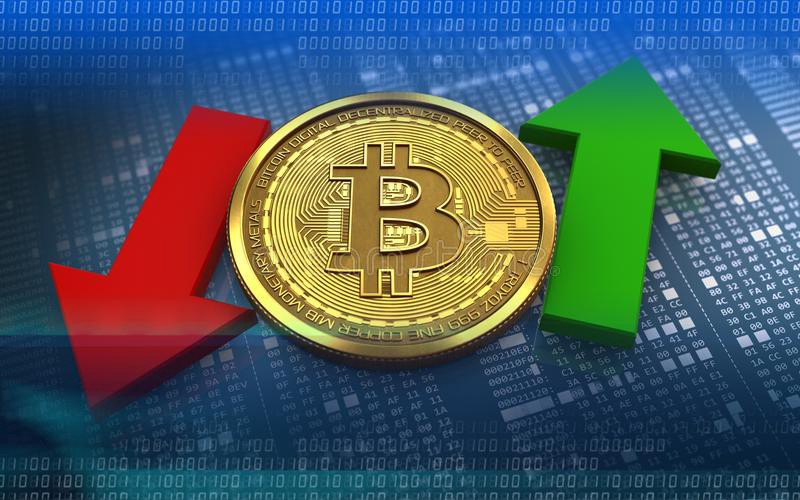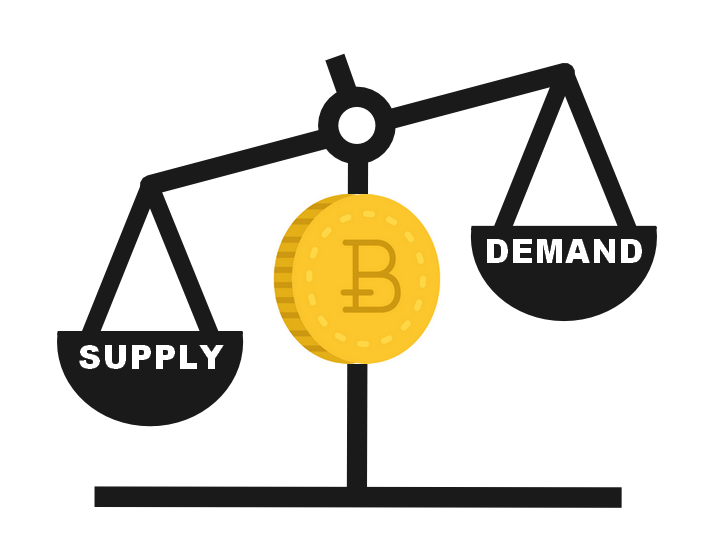Top 5 Factors Influencing Bitcoin Price
Like most cryptocurrencies, Bitcoin is a very volatile digital currency. Its price has increased by more than 220% between November and December 2017 for example. In the opposite direction, the price of Bitcoin also underwent a sharp correction between January and February 2018 to lose nearly 60% before sinking into a bear market of several months. The year 2019 with a return to a bull market only confirmed this ultra-volatile nature of Bitcoin.

If there is no question of giving up investing in Bitcoin because of its high volatility, it is important to ask the right questions and think about the factors that drive Bitcoin’s ups and downs.
Even better, you will have probably noticed that most cryptocurrencies are generally indexed to Bitcoin. This implies that its fluctuations will have the same effect on most cryptocurrencies, both upwards and downwards. Determining the factors underlying the ups and downs of Bitcoin will allow us to better predict and understand developments in the cryptocurrency market as a whole.
In addition, it should be noted that the effects of these factors on the price of Bitcoin and other cryptocurrencies are often exacerbated. This is because the world of cryptocurrencies is new and therefore sometimes unknown to some investors, which can lead to disproportionate reactions to buying or selling.
That being said, I suggest that you discover the Top 5 Factors that are at the root of the ups and downs of the Bitcoin price. Of course, this list is far from exhaustive, but these are the top factors.
1. The Law Of Supply And Demand
Anyone who has already taken elementary economics courses immediately understands that Bitcoin, like other cryptocurrencies, complies with the Law of Supply and Demand.

The Bitcoin supply can be compared to Gold since there is a predetermined maximum number of Bitcoins that can be put into circulation in the same way as the total quantity of Gold on Earth is known. The comparison does not stop there because if miners need to extract gold from the mines to bring it to the sales points, Bitcoin miners must do the same to create new Bitcoins.
To do this, they must rely on the computing power of their computers by solving complex mathematical equations. By solving this mathematical puzzle, miners will be rewarded via Bitcoins, which will increase the supply of Bitcoins available on the market.
The Bitcoin demand side operates on the same level as Gold and other valuable resources. The more new investors enter Bitcoin seeking to acquire it, the higher the price of Bitcoin will increase.
2. Media Influence
Various studies have shown that the media is the most important source of influence on the price of Bitcoin and other cryptocurrencies. Greater media coverage leads to a better understanding of cryptocurrencies and Bitcoin by the general public. This can potentially attract new people to cryptocurrencies.

Positive media coverage of Bitcoin will generally lead to higher prices, while negative price coverage will have the opposite effect on cryptocurrency prices.
It is also important not to overlook the mass effect caused by certain news in the media. A crypto investor who has discovered certain information in the media will be quick to talk to his peers who will do the same. With the power of social networks, the news will spread like wildfire and the price of Bitcoin will be impacted.
Let’s take the simple example of a large company that is well known in the world of traditional finance and that would declare a very strong interest in the Ripple system and would like to test it in real conditions in the near future. This simple declaration of intent will cause a sharp increase in the price of its token, the XRP. Indeed, by reading this statement, many investors will consider that Ripple is legitimized since a major player proclaims its intention to support it. This will encourage them to invest in his token.
It is therefore necessary to keep abreast of the latest news on Bitcoin and cryptocurrencies in order not to miss future bullish or bearish waves.
3. Political events
As with traditional currencies, political events have an impact on the exchange prices of various cryptocurrencies.

However, the change in the Bitcoin price caused by political events is generally the opposite of what happens to central bank currencies. A lack of confidence in a country’s economy leads people to give it a chance and to believe in cryptocurrencies rather than traditional currencies.
As Bitcoin is the emblematic leader in cryptocurrency, its price will increase first before it affects the other currencies on the market.
We can recall the example of the Greek crisis in 2015, which led a large number of Greek traders to invest in Bitcoin. Similar effects occurred when Britain decided to leave the European Union or when Donald Trump was elected President of the United States of America.
Finally, the trade war between the United States and China or the more than difficult relations between Donald Trump and Iran have also had an impact on the price of Bitcoin in recent months.
4. Regulatory Changes Decided By Governments
As Bitcoin and cryptocurrencies are new concepts, it is difficult for governments to adopt a middle-term position on them. Governments are constantly changing the regulations concerning them in terms of taxation among others things.

While Bitcoin is decentralized and independent of the influence of central governments, the regulations decided by the latter will have a direct impact on the system since they apply to investors in cryptocurrencies. Fears that may arise from government statements or decisions will certainly cause the price of Bitcoin to fall.
When China, which is the world’s largest market for cryptocurrencies, took very tough decisions on Bitcoin and decided to close several trading platforms at the end of 2017, the price of Bitcoin fell dramatically. We also still remember the 100 billion dollar drop in the cryptocurrency market in just 24 hours at the beginning of February 2018 for example. This came after announcements of potential regulatory changes by various Asian governments (China, India, South Korea,…).
Conversely, it was sufficient for the Government of Japan to officially recognize Bitcoin as a legal tender for its course to disappear in the following months.
The influence of government decisions on the price of Bitcoin and other cryptocurrencies should therefore never be overlooked.
5. Changes In The Bitcoin Community
Another factor of instability linked to Bitcoin comes from its governance by a community that is struggling to find a consensus to ensure its future in the middle and long term. In addition, decisions made by the community affect the Bitcoin Blockchain and therefore the entire ecosystem as a whole.

When a consensus cannot be reached, as was the case with the increase in block size in 2017, a hard fork can occur leading to a separation into 2 separate blocks according to different rules. This is how Bitcoin Cash was born in August 2017.
These periods of instability within the community over the rules of Bitcoin and its future have often had a negative effect on Bitcoin prices. Nevertheless, once the fork was passed, we could see that the trend was towards an upward recovery. So this is possibly an opportunity to take advantage of it to invest when the Bitcoin price is low and then make good profits.
Conclusion
Just as financial markets have ups and downs, Bitcoin and cryptocurrencies also have ups and downs. Due to the novelty of the Blockchain and Bitcoin, these cycles of increase or decrease are much stronger. It is therefore good to be as well informed as possible and to know the factors that influence the price of Bitcoin in order to be able to react as well as possible or even anticipate in an ideal way.
It is likely that as the Bitcoin and the cryptocurrency market as a whole mature, this high volatility tends to disappear, thus limiting the risk.







